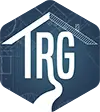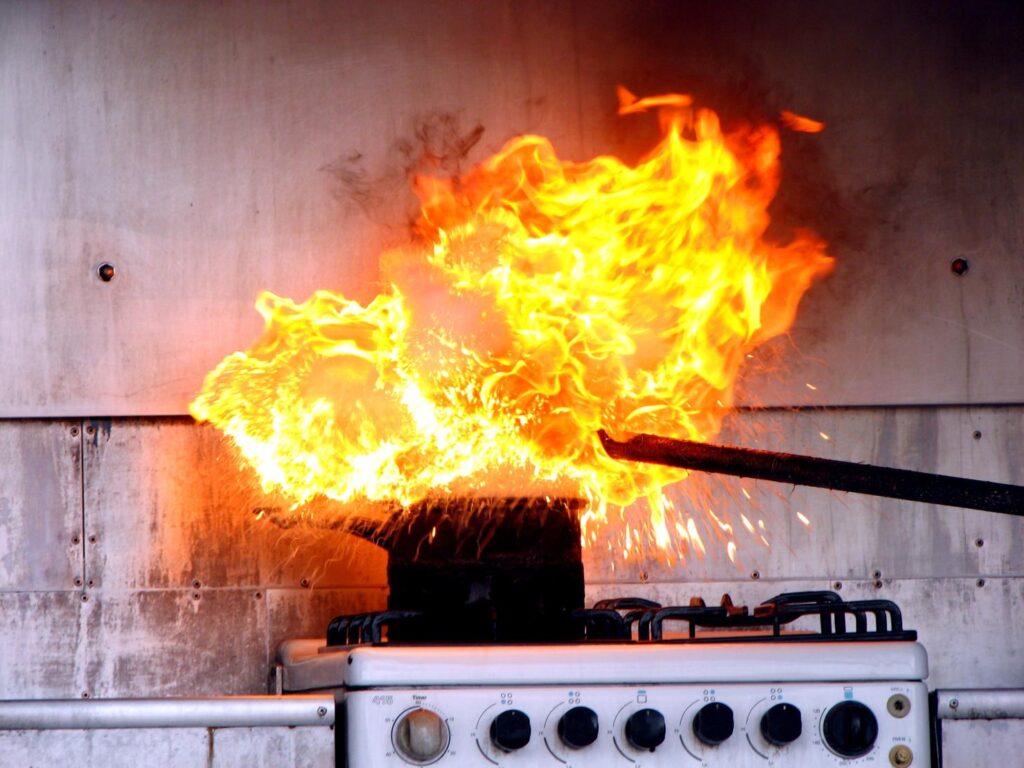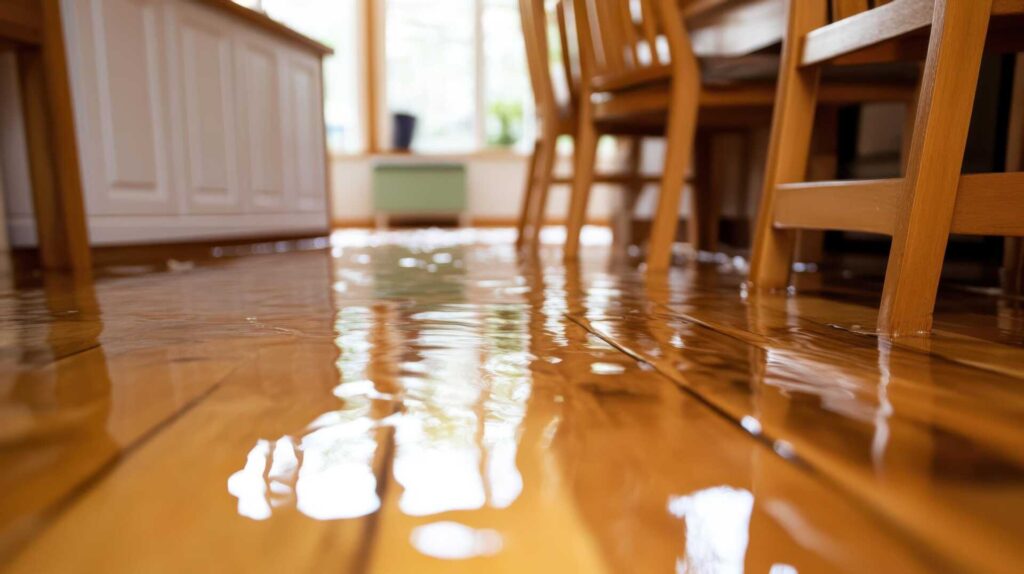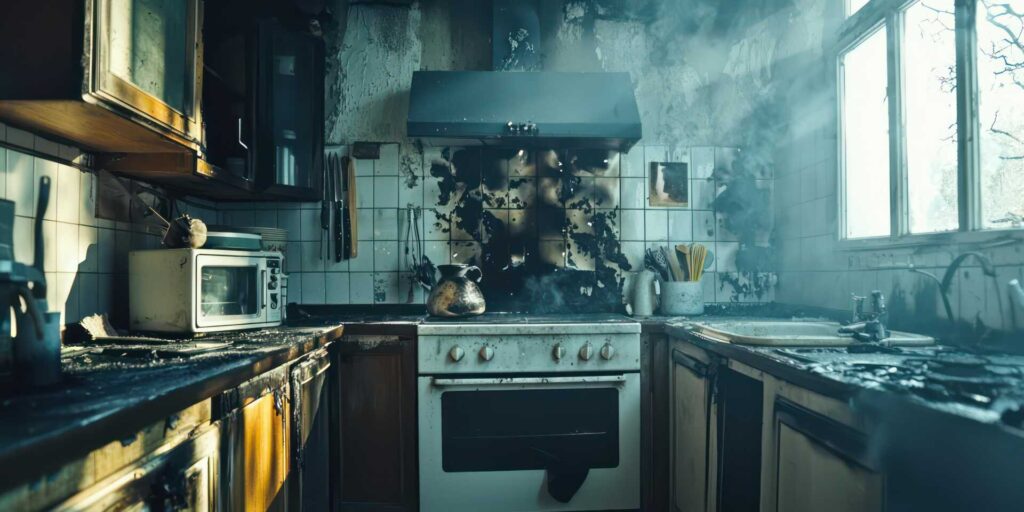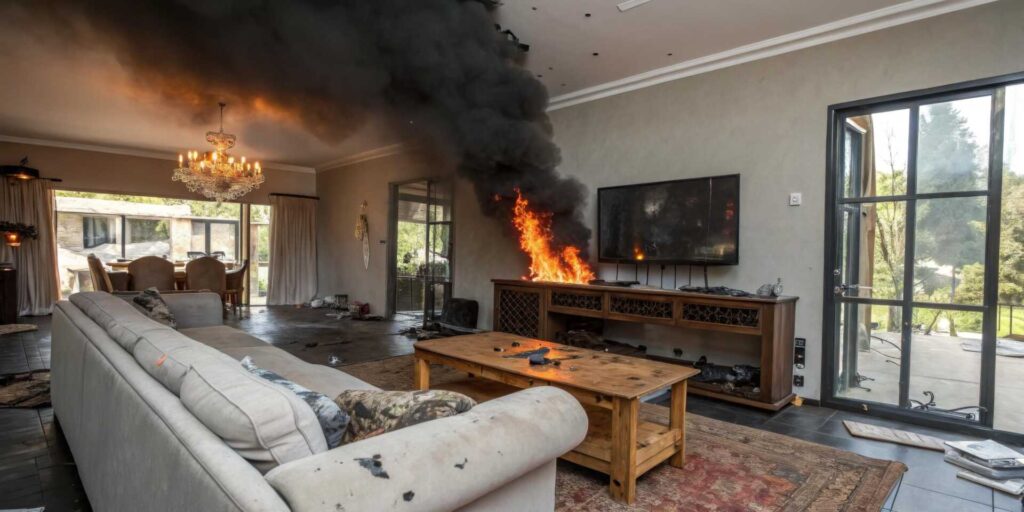
Contents
When smoke damage occurs in your home, it’s not just about the visible residue. The effects can linger, impacting your health and property value. You might think a quick cleanup is enough, but that’s rarely the case. Understanding the full scope of smoke damage and the smoke damage restoration process is essential. So, what steps should you take to ensure your home is safe and welcoming again?
Key Takeaways
- Smoke damage can lead to serious health risks, including respiratory issues and long-term cardiovascular problems, necessitating swift restoration for safety.
- Timely restoration minimizes lingering toxins, improving air quality and ensuring a healthy living environment.
- Professional cleanup effectively removes tough odors and residues, restoring the home beyond typical DIY capabilities.
- Ignoring smoke damage can decrease property value and appeal, making restoration essential for preserving investment.
- Implementing proper fire safety measures and restoration practices fosters community belonging and enhances overall well-being.
Understanding Smoke Damage and Its Effects on Homes
When a fire occurs, smoke damage can spread quickly, affecting the areas directly involved in the blaze and other parts of your home. Understanding smoke properties is essential; smoke can travel through walls and ceilings, leaving behind a residue that’s difficult to clean. Effective smoke damage restoration is necessary to address these challenges and restore your home to its original condition.
Different damage types arise, including staining, odor, and corrosion, all of which can impact your living space’s comfort and safety. You might find that soot clings to surfaces, creating an unsightly mess, while lingering odors can make your home feel unwelcoming.
It’s important to recognize that smoke damage isn’t just a cosmetic issue; it can affect the materials in your home, leading to long-term problems. By addressing smoke damage promptly, you can restore your space and ensure it remains a safe and inviting place for you and your loved ones.
Taking action now can help you reclaim the warmth of your home.
Health Risks Associated With Smoke Damage
Smoke damage restoration is crucial for reversing the negative effects of smoke on your property, ensuring that your home remains a safe haven.
Smoke damage can pose serious health risks that you shouldn’t ignore.
Breathing in smoke can lead to respiratory issues and irritants that affect your lungs.
Additionally, chemical exposure from soot and residues can result in long-term health consequences, making it essential to address smoke damage promptly.
Respiratory Issues and Irritants
Although many people underestimate the effects of smoke damage, it can pose significant health risks, particularly for your respiratory system. Poor air quality can lead to various health symptoms that affect not just you but your loved ones as well.
Consider these potential issues:
Chronic Coughing – Persistent irritation can make it hard to breathe comfortably.
Asthma Attacks – Smoke can trigger severe episodes, putting you and your family’s health at risk.
Allergic Reactions – Increased allergens in your home can lead to sneezing, nasal congestion, and more.
Taking action to restore your home isn’t just about aesthetics; it’s about ensuring a safe environment for everyone you care about.
Prioritizing smoke damage restoration means prioritizing your health and well-being.
Chemical Exposure Risks
As you deal with smoke damage, it’s crucial to recognize the hidden chemical hazards that can linger in your home.
Smoke isn’t just irritating; it carries toxic substances that can pose serious health risks. You mightn’t see them, but these chemicals can affect your family’s well-being.
Prolonged chemical exposure can lead to various health issues, from headaches to more severe respiratory problems.
Even after the visible smoke clears, these harmful particles can settle into your furniture and walls, making it essential to address the damage promptly.
By taking action now, you’re protecting your home and the health of those you love.
Don’t let toxic residues jeopardize your comfort and safety—act swiftly!
Long-term Health Consequences
When exposed to smoke damage, you mightn’t realize the long-term health consequences that can arise. The lingering effects can deeply impact your life and those you care about.
Here are a few chronic conditions you could face:
Respiratory issues: Prolonged exposure may lead to asthma or chronic bronchitis.
Cardiovascular problems: Smoke can increase your risk of heart disease and stroke.
Neurological effects: You might experience cognitive decline or memory issues over time.
These long-term effects can disrupt your daily life and threaten your sense of belonging within your community.
Protecting your home from smoke damage isn’t just about restoration—it’s about safeguarding your health and the well-being of your loved ones.
The Importance of Timely Smoke Damage Restoration
When smoke damage occurs, acting quickly is essential to minimize health risks and protect your property.
Delaying restoration can lead to lingering toxins that affect your well-being and diminish your home’s value.
Health Risks Mitigation
Smoke damage isn’t just a cosmetic issue; it poses serious health risks that can linger long after a fire is extinguished. Ignoring these risks can compromise your family’s well-being and your sense of safety at home.
Timely smoke damage restoration is essential for maintaining air quality and ensuring fire safety. Here are three critical health risks to take into account:
Respiratory issues: Smoke particles can irritate the lungs, leading to chronic conditions.
Toxic exposure: Harmful chemicals in smoke can cause long-term health effects.
Mental health impacts: The stress of smoke damage can contribute to anxiety and depression.
Acting quickly protects your loved ones and fosters a sense of community and belonging, knowing you’re doing everything possible to keep them safe.
Property Value Preservation
Ignoring smoke damage can have lasting effects on health and on your property’s value. When you let smoke residue linger, it can diminish your home’s property appeal.
Potential buyers may see it as a red flag, which can hurt your market competitiveness. Timely smoke damage restoration is essential to preserving your home’s aesthetics and financial worth.
By addressing smoke issues quickly, you maintain a welcoming environment that invites others in, enhancing your sense of belonging. Plus, a well-restored home speaks volumes about your commitment to care and upkeep.
Don’t let smoke damage dictate your property’s future; act swiftly to safeguard your investment and ensure it remains a cherished space for you and your family.
Professional vs. DIY Smoke Damage Cleanup
Although you might be tempted to tackle smoke damage cleanup on your own, weighing the benefits of hiring professionals can save you time and ensure thorough restoration.
When it comes to smoke damage, relying on professional techniques can make a world of difference.
Here’s why going with experts can be a smart choice:
Comprehensive Assessment: Professionals evaluate the extent of damage, ensuring nothing is overlooked.
Effective Techniques: They use advanced equipment and methods that go beyond typical DIY methods, tackling even the toughest odors and residue.
Peace of Mind: You’ll feel a sense of belonging in your restored space, knowing it’s been handled with care and expertise.
While DIY methods may seem cost-effective, the emotional and physical stress of smoke damage cleanup can be overwhelming.
Choosing professionals enhances your home’s environment and fosters a sense of community and support.
Assessing the Extent of Smoke Damage in Your Home
How can you accurately assess the extent of smoke damage in your home? Start with a thorough smoke assessment, focusing on key areas like walls, ceilings, and furniture. Look for discoloration, soot residue, or lingering odors—these are telltale signs of smoke’s impact.
Don’t just rely on your eyes; use your sense of smell to gauge how deeply the smoke has penetrated your space.
Next, conduct a damage evaluation by checking for structural issues or compromised materials. Pay special attention to hidden areas, like inside cabinets or behind appliances, where damage might lurk unnoticed.
Essential Steps in the Smoke Damage Restoration Process
Once you’ve assessed the extent of smoke damage, it’s crucial to follow a structured restoration process to effectively reclaim your home.
You deserve to feel safe and comfortable in your space again. Here are the vital steps to guide you through:
Gather Cleanup Equipment: Start by collecting the right tools, like respirators, gloves, and cleaning solutions, to ensure your safety during the process.
Implement Restoration Techniques: Use effective methods like thermal fogging and ozone treatment to eliminate lingering odors and restore air quality.
Thorough Cleaning: Clean all surfaces, including walls and furniture, to remove soot and contaminants, making your home a welcoming sanctuary once more.
Preventing Future Smoke Damage Incidents
After restoring your home from smoke damage, it’s time to focus on preventing future incidents. You want your space to feel safe and secure, and embracing fire safety is essential.
Start by installing smoke detectors on every level of your home; they’re your first line of defense. Test them monthly and change the batteries at least once a year.
Next, develop a fire escape plan with your family, ensuring everyone knows the routes and meeting points. Regularly check your appliances and electrical systems for any potential hazards.
Don’t forget to keep flammable materials away from heat sources and educate your loved ones about safe cooking practices.
Insurance Considerations for Smoke Damage Restoration
When dealing with smoke damage restoration, understanding your insurance coverage is essential to ensuring a smooth recovery process.
You want to feel secure and supported during this challenging time. Here are three key considerations for your insurance claims:
Review your policy: Know what’s included in your coverage limits. Some policies may not cover all smoke damage costs.
Document everything: Keep records of damage and restoration efforts. This documentation is vital for your claims process.
Reach out for help: Don’t hesitate to contact your insurance agent. They can guide you through filing claims and understanding your benefits.
Final Thoughts
Addressing smoke damage isn’t just about fixing what’s seen; it’s about protecting your health and your home’s value. You might think DIY cleanup can save money, but consider this: without professional help, hidden toxins can linger, impacting your family’s well-being. Visualize your home free of smoke odors and toxins, restored to its former glory. Prioritizing smoke damage restoration enhances your living space and fosters a healthier community for everyone.
